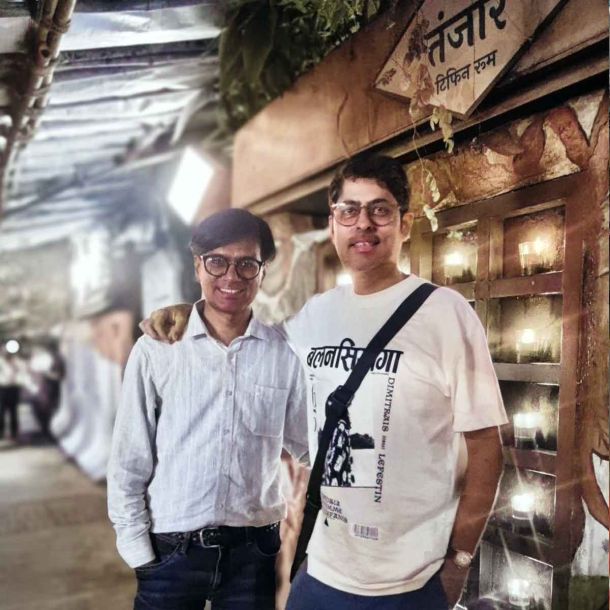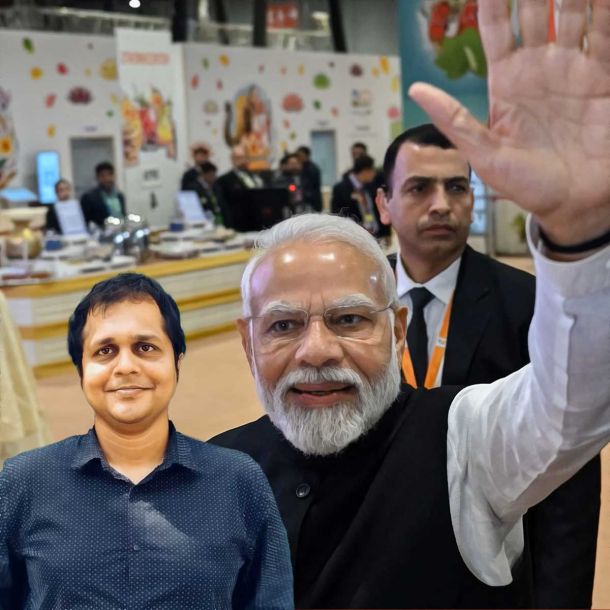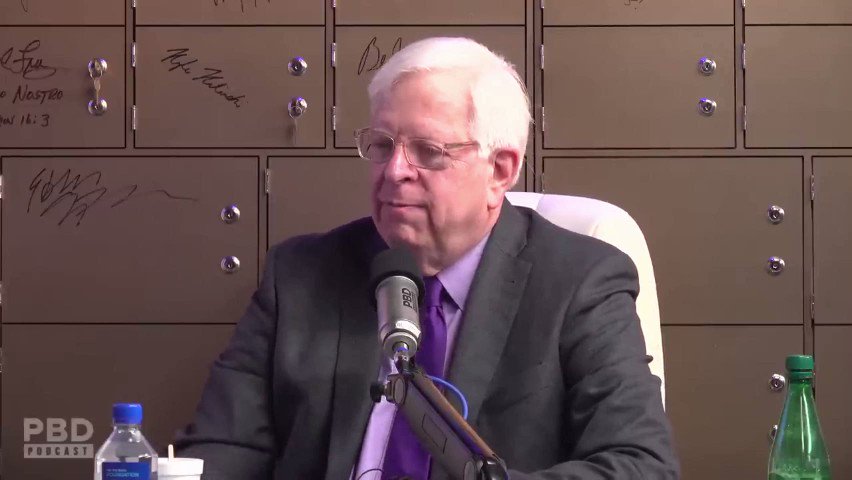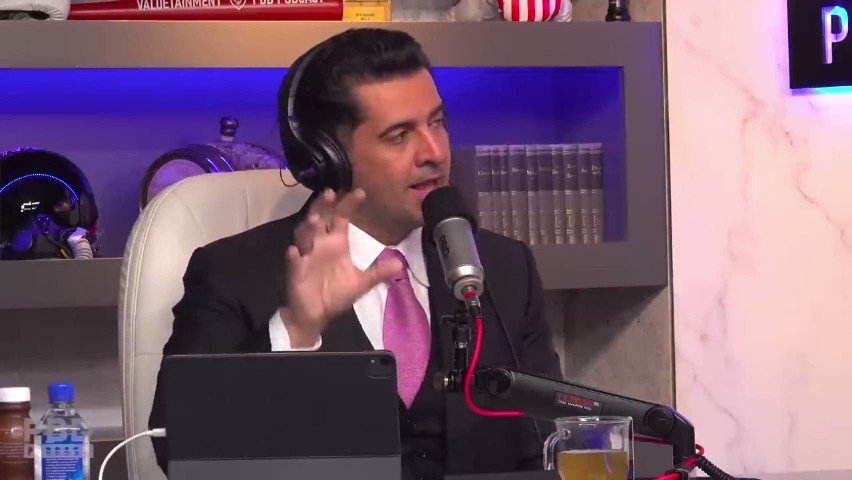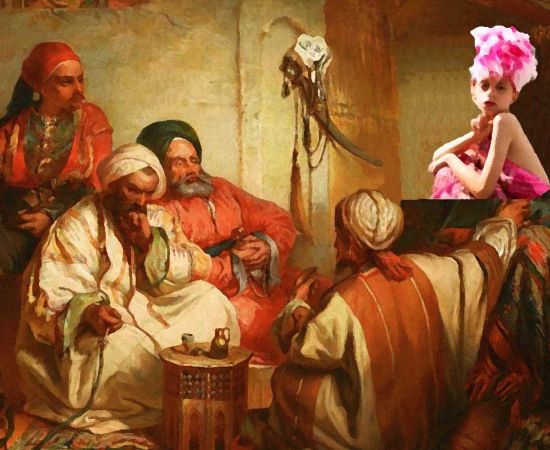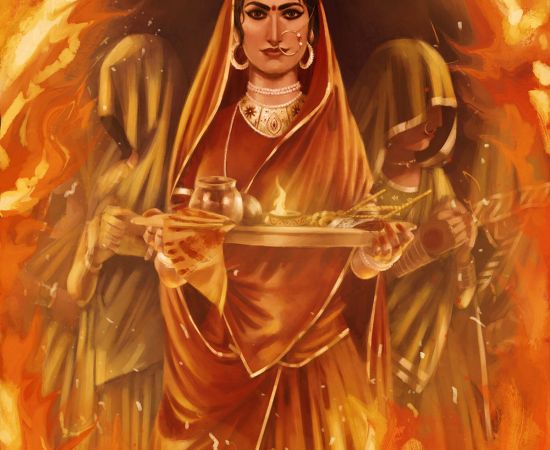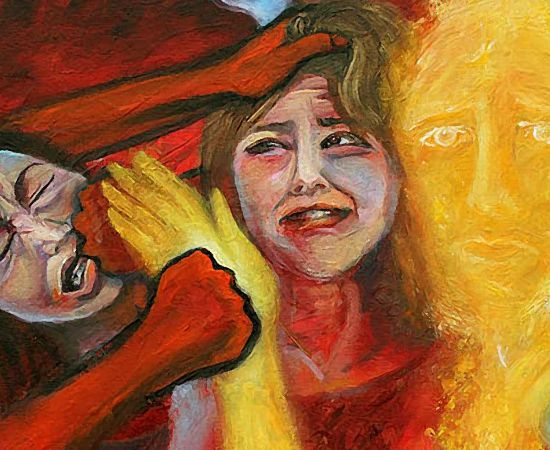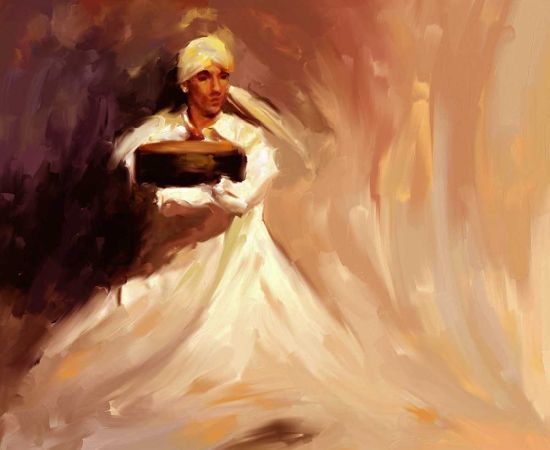More Coverage
Twitter Coverage
Satyaagrah
Written on
Satyaagrah
Written on
Satyaagrah
Written on
Satyaagrah
Written on
Satyaagrah
Written on
JOIN SATYAAGRAH SOCIAL MEDIA
"गिरफ्त": Once a Pakistani army doctor, Tahawwur Rana spent 14 years in a US jail for helping David Headley plot 26/11 Mumbai massacre that killed 166—then shamelessly hailed the terrorists as heroes worthy of Nishan-e-Haider, before being flown to India

Tahawwur Hussain Rana, a man whose name has been linked to one of the darkest chapters in India's modern history, was born in 1961 in Chichawatni, Pakistan. He is a Pakistani-born Canadian citizen with a professional background that spans both medicine and business. He served as a doctor in the Pakistan Army Medical Corps and held the rank of Captain before eventually moving to Canada in the late 1990s.
After securing Canadian citizenship, he made his way to the United States and settled in Chicago. There, he opened an immigration consulting firm called First World Immigration Services — the same business that would later be used as a front in a global terror conspiracy.
Rana’s deep connection to David Coleman Headley, born as Daood Gilani, played a central role in his downfall. The two were schoolmates back in Pakistan, and this long-standing friendship proved deadly when Headley became a member of the Pakistan-based terrorist group Lashkar-e-Taiba (LeT). Through this link, Rana found himself at the center of an international terror plot that would eventually result in the brutal 26/11 attacks in Mumbai.
|
Alleged Role in the 26/11 Mumbai Terror Attacks
Indian authorities, backed by U.S. investigations, have accused Tahawwur Rana of being one of the central conspirators in the November 26, 2008 Mumbai attacks, which left 166 people dead, including six Americans, and injured hundreds more. These attacks involved coordinated shootings and bombings that shocked the world.
According to investigators, Rana offered key logistical help to Headley and the LeT network to plan these attacks. His immigration business in Chicago became a cover for surveillance operations in India:
Cover for Surveillance: In 2006, Rana agreed to set up a branch of his immigration firm in Mumbai. He also appointed Headley — who had no experience in immigration services — as its manager. This was not to expand his business, but to give Headley a legitimate reason to travel to India and gather sensitive information on potential targets like hotels, railway stations, and even a Jewish center. Rana instructed an employee to prepare business documents for this fake Mumbai office and guided Headley on how to get an Indian visa by submitting false details. Authorities confirmed that on at least two occasions, Rana knowingly helped Headley apply for Indian visas using false information, which was essential for Headley's surveillance work.
Knowledge of the Plot: Rana wasn’t just providing logistical support. Over a span of two years leading up to the attacks, he stayed in close communication with Headley. After returning from his trips to India, Headley would brief Rana in their Chicago office on his findings and share updates from the LeT handlers. Court records, emails, and intercepts clearly showed that Rana was aware of what was being planned. According to U.S. prosecutors, Rana provided “valuable cover and support” to Headley, “knowing that Headley and others were plotting terror attacks overseas.”
Aftermath Reactions: Perhaps the most disturbing part came after the attacks had already claimed hundreds of lives. In a conversation intercepted by law enforcement, Rana told Headley that the Indians “deserved it,” referring to the victims of the massacre. He also praised the ten LeT attackers who carried out the carnage, and allegedly said they should be given Nishan-e-Haider, which is Pakistan’s highest military award, granted posthumously for acts of bravery. Rana even told Headley that he himself deserved a “medal” for his “top-class” contribution to the mission. These statements show that Rana wasn’t simply an accidental accomplice — he supported the ideology behind the attack and approved of the deadly outcome.
In summary, both Indian and American authorities see Rana as a facilitator of the 26/11 terror plot. By using his business as a disguise and leveraging his personal networks, he enabled Headley’s intelligence gathering that paved the way for the three-day siege in Mumbai. This assistance proved critical, helping LeT and its partners like Harkat-ul-Jihad al-Islami execute the brutal attacks.
|
Legal Proceedings in the United States
Arrest and Indictment: Soon after the terror attacks, U.S. authorities began connecting the dots. In October 2009, Rana was arrested in Chicago by the FBI. This was nearly a year after 26/11. The investigation led to a startling discovery — not only was Rana allegedly involved in the Mumbai attack plot, but he was also part of a separate conspiracy to attack the offices of the Danish newspaper Jyllands-Posten, which had previously published controversial cartoons of Prophet Muhammad. These cases were brought before the U.S. District Court for the Northern District of Illinois.
Trial and Conviction: Rana’s trial started in May 2011. His longtime friend David Headley had also been arrested in 2009. Headley, in order to avoid the death penalty and extradition to India, pleaded guilty in a U.S. court and agreed to testify against Rana. This move turned him into the prosecution’s star witness, and his testimony laid out the intricate details of Rana’s role in both the Mumbai and Denmark plots.
Evidence such as emails, recorded conversations, and official documents were presented in court. After careful examination, a federal jury returned a split verdict in June 2011:
Mumbai Attacks Charge: The jury acquitted Rana of conspiring to provide material support for the Mumbai attacks. This meant he was not convicted in the U.S. for directly aiding that specific attack. Reports suggest this was likely because the jury had reasonable doubt about whether Rana knowingly supported the Mumbai plot, or if he had simply been manipulated by Headley.
Denmark Plot and Lashkar-e-Taiba Support: However, the jury did convict Rana on two felony charges: one for conspiring to support the Denmark terror plot, and another for providing material support to Lashkar-e-Taiba (LeT). These convictions showed that the jury believed Rana had willingly assisted a known terrorist group and actively supported plans for international violence. U.S. Attorney Patrick Fitzgerald commented at the time, “The message should be clear to all those who help terrorists – we will bring to justice all those who seek to facilitate violence.”
Sentencing: In January 2013, U.S. District Judge Harry D. Leinenweber sentenced Tahawwur Rana to 14 years in prison for the two terrorism charges. While this was a significant sentence, it was less than the maximum possible under U.S. law. In comparison, David Headley, who had confessed to 12 different charges, including involvement in the deaths of U.S. nationals during 26/11, received a 35-year sentence that same year.
Judge Leinenweber, during sentencing, made it clear that while Rana did not physically participate in the attacks, his support “abetted the murderous goals of the Lashkar terrorists.” Rana’s lawyer, on the other hand, argued that his client was a decent man, a former military doctor, who had simply been led astray. He told the court that Rana was a “good man who got sucked into something.”.
Rana served his prison sentence in the U.S. federal system. By early 2020, after nearly a decade in custody, Rana was close to completing his 14-year term, especially with the benefit of good behavior credits. But just as one chapter was closing, another was beginning. Indian officials were already gearing up to bring him to justice on Indian soil — this time, for his alleged role in the Mumbai massacre.
|
Legal Proceedings in India
The Indian authorities had been pursuing Tahawwur Rana since 2009, the same year they began formally investigating the 26/11 Mumbai terror attacks. The probe was taken up by the National Investigation Agency (NIA), which serves as the country’s central agency for counter-terrorism cases. In November 2009, the NIA registered a case to dig deep into the broader conspiracy behind the Mumbai attacks, with a focus on international players such as David Headley and Tahawwur Rana.
By June 2011, while the court proceedings against Rana in the United States were wrapping up, the NIA announced that it would be filing a chargesheet against both David Headley and Tahawwur Rana in absentia, since both men were still in U.S. custody and could not be physically produced before the Indian courts. The Indian authorities officially labelled Rana an “absconding accused” in connection with the Mumbai case and charged him under several serious sections of Indian law:
Waging War Against the Government of India: This was charged under Section 121 of the Indian Penal Code, as the Mumbai attacks were seen not just as acts of terror, but as a direct assault on the sovereignty of the country.
Criminal Conspiracy and Murder: These charges were applied in relation to the planning and execution of the attacks that killed 166 people and caused widespread panic and destruction across Mumbai.
Offenses under the Unlawful Activities (Prevention) Act (UAPA): Rana was booked for committing terrorist acts and helping a banned terror group, as Lashkar-e-Taiba (LeT) has been officially designated as a terrorist organization in India.
Forgery and Use of False Documents: These charges stemmed from Rana’s involvement in creating fake business paperwork and visa documents to support Headley’s reconnaissance missions — crimes that were also mentioned during the U.S. investigations.
Other Offenses under SAARC Convention (Suppression of Terrorism) Act: One specific charge involved committing “manslaughter of persons” as per treaty obligations under the SAARC framework.
These legal accusations go beyond what Rana faced in the U.S. While the U.S. convictions confirmed his involvement in terror plots, the Indian charges aim to hold him accountable for the actual loss of life and destruction that occurred during the Mumbai attacks. The NIA’s draft chargesheet from 2011 not only named Rana and Headley but also pointed to key figures from Pakistan-based terror outfits, including Hafiz Saeed, Zaki-ur-Rehman Lakhvi, and members of Pakistan’s Inter-Services Intelligence (ISI), as all being part of the same “large conspiracy”.
To take the legal process forward, the Special NIA Court at Patiala House in New Delhi issued non-bailable warrants against Rana and others involved. In 2012, this court even declared several of the Pakistan-based suspects as “proclaimed offenders”, meaning they were officially labeled fugitives in the eyes of Indian law due to their continued absence. Rana and Headley too were marked as proclaimed offenders at that time since they could not be brought to court from the U.S. However, Indian law does not allow a complete trial in absentia for such serious charges, which is why Rana’s case remained in waiting — his physical presence in Indian custody was necessary to begin the trial process.
|
Efforts to Question Headley
Even though Rana could not be accessed immediately, the Indian authorities continued to build their case. As early as 2010, Indian investigators had already secured a wealth of details about Rana’s activities from the ongoing American investigation. The big breakthrough came in 2016, when David Headley, now a convicted terrorist and serving time in the U.S., gave videotaped testimony before an Indian court. In this testimony, Headley explained the role played by Pakistan’s ISI and confirmed that Tahawwur Rana had directly helped in planning the Mumbai attacks. According to Indian prosecutors, this statement was the key to “nailing” Rana’s role in the entire conspiracy.
Extradition Request
Once it became clear that Rana’s prison term in the United States was nearing its end, India wasted no time in starting the legal process to bring him home for trial. The Ministry of Home Affairs (MHA), along with the NIA, put together a comprehensive extradition dossier. In June 2020, India formally submitted an extradition request to the United States, based on the mutual extradition treaty between the two nations.
The request clearly explained the crimes for which Rana was wanted in India, including his role in the 26/11 Mumbai terror attacks. It also clarified that Rana was being sought solely for a criminal trial and not for any political reasons. This distinction was important, as international extradition agreements often prohibit transfers for politically motivated cases. With this request, the wheels of a complex legal and diplomatic process were officially set in motion.
|
Extradition to India: Process, Timeline, and NIA Custody
Bringing Tahawwur Rana back to India to face justice was not a simple task. It took a long legal battle that stretched over five years — from 2020 to 2025. This process involved multiple U.S. courts, diplomatic decisions, and coordination between agencies in both countries. Here’s a look at how the extradition unfolded, step by step, based on official records and statements.
June 2020 – Extradition Request Filed: The Indian government took the first formal step in June 2020 by requesting Rana’s extradition under the bilateral treaty between India and the United States. At that time, Rana was still serving his 14-year prison sentence in U.S. federal custody. However, instead of being released after serving his sentence, he was re-arrested on an extradition warrant and held while the extradition case was reviewed.
Mid-2021 to 2022 – Extradition Hearing: The matter was heard by a U.S. Magistrate Judge in the Central District of California, as Rana had been moved to a Los Angeles detention center. This likely happened because the extradition warrant placed him under the jurisdiction of a West Coast facility after his sentence ended. Rana’s lawyers strongly opposed the extradition. They argued that since he had already been acquitted in the U.S. on charges related to the Mumbai plot, putting him on trial again would amount to double jeopardy (also called “non bis in idem”). They also warned that he could face harsher punishment or mistreatment in India. The U.S. government countered by saying that India’s charges, especially for murder, were different from those addressed in the American trial, and India had provided enough legal guarantees.
May 16, 2023 – Extradition Certified: After examining the case documents and the India–U.S. Extradition Treaty, Magistrate Judge Jacqueline Chooljian ruled on May 16, 2023, that Rana could be extradited to India. She found probable cause to believe that Rana had helped terrorists, as India alleged, and concluded that all conditions of the extradition treaty were satisfied. While the case now moved to the U.S. State Department for the final decision, Rana had the legal right to challenge the ruling through a habeas corpus petition.
August 2023 – Habeas Petition Denied: As expected, Rana filed a habeas corpus petition with the U.S. District Court in California, asking the judge to overturn the extradition certification. But on August 10, 2023, District Judge Dale Fischer rejected the petition and agreed that Rana’s extradition could go ahead under the terms of the treaty. This was a big blow to Rana’s legal team.
August 15, 2024 – Appeals Court Upholds Extradition: Rana’s lawyers then appealed to the Ninth Circuit Court of Appeals. But on August 15, 2024, a three-judge panel from the Ninth Circuit also sided with the lower court. They ruled that the extradition treaty allowed India to prosecute Rana, and his claim of double jeopardy didn’t apply internationally. They also said that the “Non Bis in Idem” clause in the treaty did not stop India from trying Rana for the Mumbai attacks, as he hadn’t been punished for those crimes in the U.S. By this point, every level of the U.S. judiciary had approved the extradition.
Late 2024 – U.S. Supreme Court Petition: With all lower courts ruling against him, Rana made a final attempt to stop the extradition. He filed a petition for certiorari with the U.S. Supreme Court, asking them to hear his case. He also filed emergency requests to pause the extradition. But on January 21, 2025, the Supreme Court declined to hear the case, effectively ending his appeal route. Later, on April 7, 2025, Justice Amy Coney Barrett, who oversees the Ninth Circuit, rejected Rana’s last emergency plea to delay the extradition. These decisions cleared the final legal barriers.
February 2025 – Political Sign-off: While the courts were making decisions, diplomatic channels were also involved. In February 2025, a press statement from the U.S. government made the political approval clear. The U.S. President, standing alongside the Prime Minister of India, said, “Today, I am pleased to announce that my administration has approved the extradition of one of the plotters…”). Following this, the U.S. Secretary of State issued a surrender warrant, allowing Rana to be handed over to Indian officials.
April 9–10, 2025 – Handover and Transfer: On April 9, 2025, the U.S. Marshals Service carried out the surrender warrant by taking Rana from jail and handing him over to a team of Indian law enforcement officers. Indian officials from the NIA and other agencies flew to the U.S. to escort him. He was boarded onto a special flight and transported to India under tight security, along with elite NSG commandos. The operation was closely coordinated between the U.S. DOJ’s Office of International Affairs and Indian authorities to ensure a safe and smooth transfer.
Arrival and NIA Custody: Rana’s flight reached New Delhi on April 10, 2025, in the evening. As soon as he landed at Indira Gandhi International Airport, he was formally arrested by NIA officials, executing the original 2009 Indian arrest warrant. After a medical check-up at the airport, he was taken to the Patiala House Courts. By around 10 PM, he was presented before a duty judge, where the NIA requested 20 days of custodial remand, stating it needed time to “unravel the complete conspiracy” through detailed questioning. The court approved 18 days of NIA custody, lasting until April 28, 2025. Rana was then taken to the NIA’s high-security lockup in New Delhi, where a 12-member NIA team began interrogations.
|
The Indian government welcomed Rana’s extradition as a major achievement. The NIA, in an official statement, called it the result of “years of sustained and concerted efforts” to bring a “key conspirator” of 26/11 to justice. Notably, this was the first time ever that the United States had extradited a terrorist suspect to India for a case of this seriousness. U.S. officials also reaffirmed their partnership with India, with the State Department stating that the U.S. “has long supported India’s efforts to ensure those responsible for these attacks are brought to justice.”
Now that Tahawwur Rana is in Indian custody, the legal process is set to move forward. The Indian government has appointed a special public prosecutor to manage the case, showing how seriously they are treating this matter. In the months ahead, Rana will face trial in India on charges that include murder, conspiracy, waging war against the nation, and terrorist acts related to 26/11. If found guilty, he could face life imprisonment or even the death penalty, though reports confirm that India has promised not to seek the death penalty as a condition for the extradition.
In conclusion, Tahawwur Rana, once a military doctor and businessman, now stands accused of playing a major role in one of India’s worst terror attacks. After serving time in the United States and fighting a lengthy legal battle, he has been brought to India to face justice. His case shows how international cooperation can work to hold terrorists accountable, no matter how long it takes or how far they run.
| Date | Event |
|---|---|
| 1961 | Born in Chichawatni, Pakistan. |
| Late 1990s | Migrated to Canada; later moved to Chicago, USA; started First World Immigration Services. |
| 2006 | Allowed David Headley to set up a fake Mumbai office for surveillance, aiding Lashkar-e-Taiba. |
| Nov 26, 2008 | Mumbai terror attacks killed 166 people, including six Americans. |
| Oct 2009 | Arrested by the FBI in Chicago for involvement in Mumbai and Denmark terror plots. |
| May 2011 | Trial begins in U.S. District Court, Northern District of Illinois. |
| June 2011 | Acquitted of Mumbai plot; convicted for Denmark plot and support to LeT. |
| Jan 2013 | Sentenced to 14 years in U.S. federal prison. |
| Nov 2009 | NIA registers case against Rana and Headley in India. |
| June 2011 | NIA announces chargesheet in absentia; Rana declared “absconding accused.” |
| 2016 | David Headley gives video testimony to Indian court, confirming Rana’s role. |
| June 2020 | India submits formal extradition request to the U.S. |
| May 16, 2023 | U.S. Magistrate certifies Rana as extraditable to India. |
| Aug 10, 2023 | Habeas corpus petition denied by U.S. District Judge. |
| Aug 15, 2024 | Ninth Circuit Court of Appeals upholds extradition. |
| Jan 21, 2025 | U.S. Supreme Court denies certiorari; no review of case. |
| Apr 7, 2025 | Justice Amy Coney Barrett rejects emergency stay request. |
| Apr 9, 2025 | U.S. Marshals hand over Rana to Indian officials. |
| Apr 10, 2025 | Rana lands in Delhi; arrested by NIA; 18-day custody granted by court. |
| Apr 11–28, 2025 | Interrogation by 12-member NIA team begins in New Delhi. |
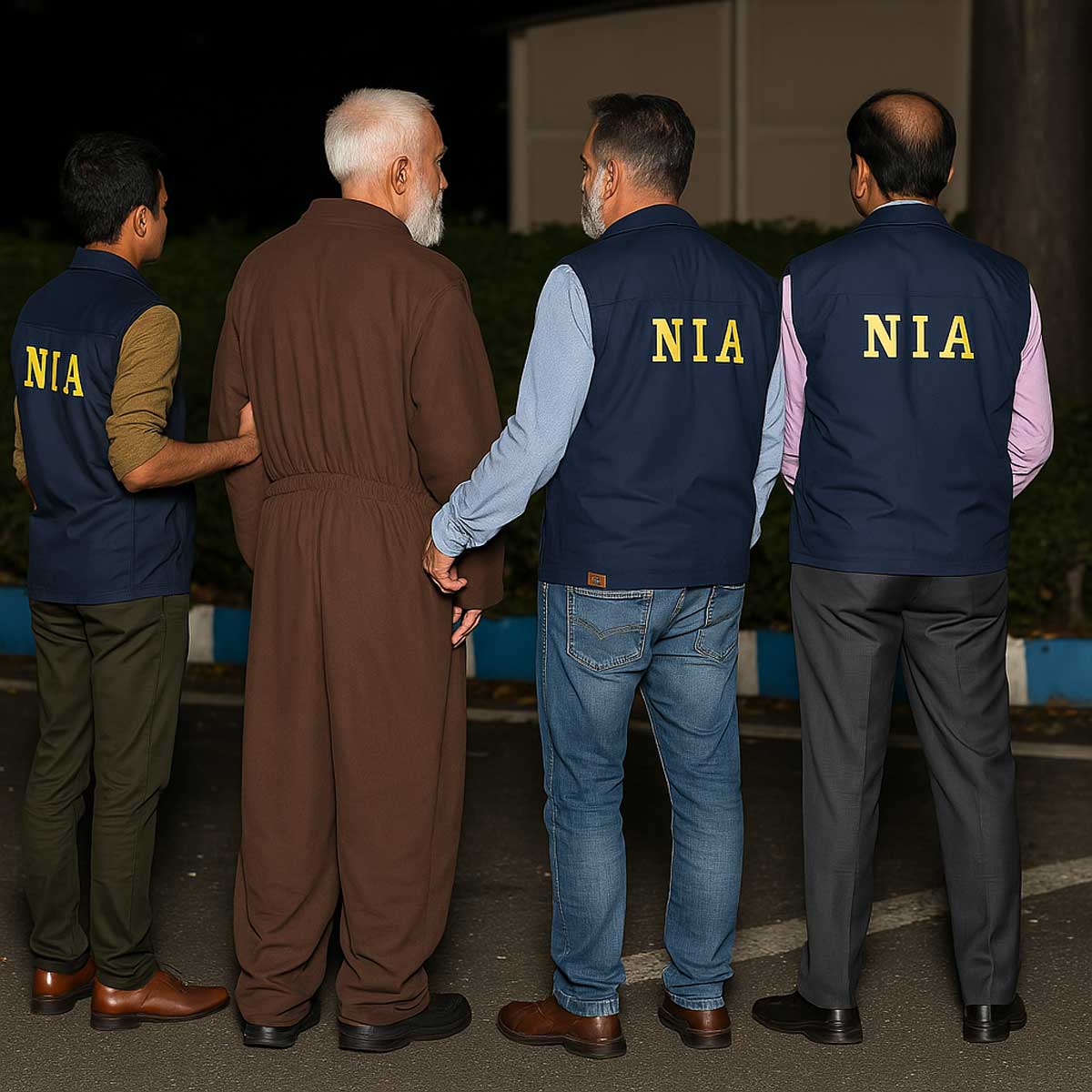 |
Sources:
- U.S. Department of Justice, press release (Apr. 10, 2025): “U.S. Extradites Alleged Co-Conspirator of 2008 Mumbai Terrorist Attacks to Face Charges in India.”justice.gov
- Reuters news report (Apr. 10, 2025): “Canadian wanted for 2008 Mumbai attacks arrives in India after US extradition.”reuters.com
- FBI Chicago Division press release (June 9, 2011): “Chicago Businessman Tahawwur Hussain Rana Guilty of Providing Material Support...”fbi.gov
- Indian Express (Apr. 11, 2025): “16-year wait ends: 26/11 conspirator Rana flown to Delhi, will face trial.”indianexpress.com
- Hindustan Times / PTI (Aug. 17, 2024): US Court of Appeals ruling on Rana’s extraditionhindustantimes.com
- India Today (June 11, 2011): NIA chargesheet details for Headley and Ranaindiatoday.in
 Support Us
Support Us
Satyagraha was born from the heart of our land, with an undying aim to unveil the true essence of Bharat. It seeks to illuminate the hidden tales of our valiant freedom fighters and the rich chronicles that haven't yet sung their complete melody in the mainstream.
While platforms like NDTV and 'The Wire' effortlessly garner funds under the banner of safeguarding democracy, we at Satyagraha walk a different path. Our strength and resonance come from you. In this journey to weave a stronger Bharat, every little contribution amplifies our voice. Let's come together, contribute as you can, and champion the true spirit of our nation.
 |  |  |
| ICICI Bank of Satyaagrah | Razorpay Bank of Satyaagrah | PayPal Bank of Satyaagrah - For International Payments |
If all above doesn't work, then try the LINK below:
Please share the article on other platforms
DISCLAIMER: The author is solely responsible for the views expressed in this article. The author carries the responsibility for citing and/or licensing of images utilized within the text. The website also frequently uses non-commercial images for representational purposes only in line with the article. We are not responsible for the authenticity of such images. If some images have a copyright issue, we request the person/entity to contact us at This email address is being protected from spambots. You need JavaScript enabled to view it. and we will take the necessary actions to resolve the issue.
Related Articles
- Congress-led Chhattisgarh government’s plans to allot government land to Pakistan-based Dawat-e-Islami banged after local BJP leaders opposed any such moves
- Murder case of Hindu Youth Kishan Bharwad took a far more sinister turn when a Pakistani political party link in the case is revealed: Hindus protest in Gujarat erupts
- US Justice Department takes down 36 Iranian websites from Iranian Islamic Radio and Television Union and KH: Read full details
- Kashmir humiliates Pakistan and gives cold shoulder to Pakistan sponsored ‘Kashmir Solidarity Day’ as no public speeches, rallies on the eve from the public or separatist movements or any special prayers in mosques
- Five LeT terrorists planned bomb blast at Darbhanga railway station, had visited Pakistan several times: NIA files charge-sheets
- UP Anti-Terrorism Squad arrests Bangladeshi national Talha Bin Farookh from Darul Uloom Deoband with fake documents: Major jolt to terrorism and anti-Bharat sleeper cells
- Facing an economic crisis Nationalist Pakistanis are loathing Saudi Arabia, and they have solutions for all the obstacles: Nukes and opium
- “US shares interests with Pakistan in terms of security and stability” and enjoys a healthy military-to-military relationship: Pentagon Spokesman John Kirby, he also realizes Pakistan’s sacrifices in fighting terrorism
- Supreme Court dismisses plea seeking protection of Hindus from the Muslim community in Mewat
- Twitter rewards an Islamist org, set to be banned by India, with a verified blue tick: Here is what PFI has done in the past
- Srinagar Police arrested local hybrid terrorists affiliated with the terror outfit The Resistance Front (TRF), an offshoot of Lashkar-e-Taiba: Recovered arms, ammunition, and incriminating material
- Following NIA’s demand for death penalty for terrorist Yasin Malik, Pakistanis have started shedding tears and seeking immediate UN intervention: Calls India ‘fascist’ and that gross human rights violation by Modi
- Ministry of External Affairs summons South Korea Ambassador over the pro-terror stance of Hyundai Pakistan on Kashmir and expressed strong displeasure of the Government: Korean Minister Yong exhibit regret
- Why Hindu-Sikh genocide of Mirpur in 1947 ignored? Why inhuman crimes of Radical Islamists always hidden in India?
- Violence Against Minority Hindus in Bangladesh: The Mistier World Of Silence



